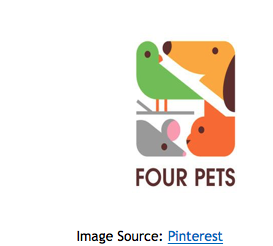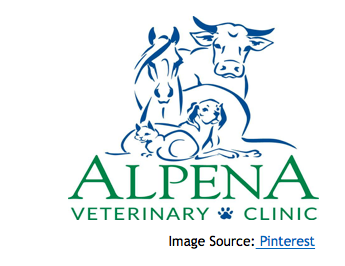December 2020
How To Post At The Best Time On Social Media
28/12/20 12:30
3 Top Tips For You To Post At The Best Time On Social Media
So you've some great posts. You're pleased with the information and photo's or video's you're posting. As an equestrian or pet care entrepreneur you know you can make a difference. Not only helping people to help their animals, but also to help you build your brand.
But you're not getting the engagement you're expecting. Is this because you're posting at the right time of day? Or are you posting when no-one's online?
In short, there is not a wrong time of day to post. Many of the social networks do not show posts in someone's feed, by date/time order. Often they're shown based on engagement.
So if your post has likes, comments or shares, it can get greater priority or visibility.
You don't need to spend lots of money though on promoting posts!
How can you get more engagement on your posts? Here's 3 top free tips:
- If your post refers to a company or an individual (say one of your customers), then tag them. They may then engage with the post, and in turn this will help you.
- Be regular! Sounds too simple? Well if people get used to seeing your posts they are more likely to engage with you. As they get more comfortable with your work. Also many of the social networks prefer accounts that are consistent. Meaning they then show them in feeds.
- Comment and engage on other people's posts. Now you may say how is this going to help you? There's several reasons.
- Number one, by you commenting, liking or sharing on another post, your profile will then be "logged" as doing so. Other's can then see you, and they then may go and look at your profile. Like what they see and then engage on your posts. Far fetched - no!! It happens all the time.
- Number two reason, most social networks like accounts that engage with others. Putting the 'social' into 'social network'. If you are a regular contributor to a network, through commenting and engaging on others. It will benefit your own posts.
I make no apology for not saying you should post a specific time each day. Because despite there being much conflicting advice online. It really doesn't matter. Consistency is key to development and growth. As it is with all aspects of your life.
Action point
If you're not already doing the above 3 tips on a regular basis - by that I mean at least three times a week. Then start now! Remember social networking for your business is not likely to be an overnight win. You need to be consistent. But your equestrian or pet care business will benefit.
Good luck and please feel free to share this article or join me on social media at Twitter, Facebook, Instagram.
How to Get Confidence Using Social Media
Click here for more information on consultancy. Or email me at info @ taranet.co.uk for info on coaching opportunities with me.
About The Author
Suzanne Harris is an equestrian and canine entrepreneurial coach and consultant to veterinarians who want to help prevent animals being affected by domestic abuse.
PS: You can find more equestrian and pet care themed business articles over at my Linkedin, see more here https://www.linkedin.com/in/suzanne-harris-mcmi/detail/recent-activity/posts/
Are You Making The Most Of Being On Social Media?
11/12/20 12:59
3 Top Tips For You To Have Social Media Success
You have a social media profile for your pet care business, to promote your business. But are you making the most of it? There are many strategies you can use to maximise engagement and reach. And get new and help retain existing customers. It's essential though you have some basics in place.
Otherwise you're missing opportunities. Remember your potential customers are scrolling through lots of information. Make it easy for them. Don't assume they'll do lots of research on whether your business will help them. They probably won't. Here's 3 top tips to help you maximise your social presence.
Tip 1 - A Complete Profile
You're scrolling through social media. You find an interesting account. Or you see a post you'd like to follow up with the company or person who posted it.
But then you see you can't contact them! Because there's no contact details.
An obvious thing to include on your profile? Well unfortunately not. Many people don't.
So the first top tip is to always and I mean always include your profile some contact details.
Your website at a minimum should be listed. But also your email or telephone or WhatsApp.
If you've got your pet care business on social media, there's no reason for you not to have your contact details. Otherwise what is the point?
Tip 2 - Your Name
What's in a name? Well quite a lot, especially on social media. Or in business generally for that matter! Keep your profile name professional. If your social media account is for your pet care business, then your name should be professional. And it should be your business name.
If your preferred account name is taken already, then consider adding a number or an underscore if your allowed. (social network permitting).
But make sure the name is relevant to you and your business. You could use your own name, not your business name.
Be objective, if you were someone who knew nothing about your business. Would you recognise from the name what you were about?
Tip 3 - Description
In your social profile you an add a short biography of you and your business. The amount of text will vary according to the network. But make the most of whatever space you have.
Say what you do in as few words as possible. What I mean is don't waffle or go off point! Keep it all professional. Say where you work - the area.
That way people will know whether you're a business they'd like to know more about. And whether you're relevant to them.
Action Point
Whichever social network you use as an equestrian or pet care entrepreneur. Review your profile. And take note of the three ideas above. And if you're not doing any of them. Then start now!
How to Get Confidence Using Social Media
Click here for more information on consultancy. Or email me at info @ taranet.co.uk for info on coaching opportunities with me.
About The Author
Suzanne Harris is an equestrian and canine entrepreneurial coach and consultant to veterinarians who want to help prevent animals being affected by domestic abuse.
PS: You can find more equestrian and pet care themed business articles over at my Linkedin, see more here https://www.linkedin.com/in/suzanne-harris-mcmi/detail/recent-activity/posts/
How to Make Your Pet Logo Relevant to Your Business
10/12/20 12:31
What's Your Identity For Your Pet Care Business?
Many logo and graphic designers stress upon the importance of brand identity designs being true and relevant to the business. Paul Rand famously called a logo, ‘an ambassador’, for the company. He was of the opinion that a symbol ‘doesn’t sell directly but identifies’.
If you think about it, this is how businesses manage to turn themselves into successful brands. When it comes to pet logos, this is what you have to keep in mind. The relevance of your logo and how it is able to get the target audience to identify your business.
The competition in the pet industry is tough, which is why, you need to communicate with the customer clearly and directly through your brand symbol. Tell them what you have to offer from the first look so that there is no confusion. In order to do so, your pet logo design has to be relevant to your business and represent it in the best way possible. There are a few useful tips and tricks to creating a pet logo that will help to make it relevant to your business.
Define Your Audience
One of the first steps that you can take towards creating an impressive and to the point logo is to narrow down your target audience. The more you are clear about the group of consumers you want your business to attract, the easier the design process for a relevant brand identity. Take this for example. The logo for a vet’s clinic will have a different audience than that of a dog and cat walking service. If your business belongs to the first category, then its brand symbol should portray that with simplistic wordmarks or elements such as medical instruments.
On the other hand, a dog walker or pet sitting logo can be more fun and animated to appeal to the target consumer.
Avoid the Clutter
You know how they say, too many cooks spoil the broth? Well, this is something similar. In a pet logo, it is always a better idea to keep things simple instead of adding several shapes, icons and letters. If there are a lot of elements to focus upon, your message might get lost and confuse the customer.
This is why, it’s recommended that you avoid clutter and figure out how to highlight your business in a simple manner. With a company or business that produces and sells dog food, you can just have a silhouette of a dog or puppy with a wordmark or lettermark. If you want, you can incorporate elements of nature such as leaves or trees to gain the trust of the customers in your product.
Create a Balance
This might sound strange at first but not all logos focus on keeping and maintaining a balance in their designs. Sometimes, you might be able to spot it clearly and at other times, you might just miss it. When it comes to making pet logos relevant to the business, a balanced logo design can be highly effective. If you take a look at the examples below, you will see how the animal imagery, shapes and words have been used to create a well-balanced brand identity design.


Focus on the Fonts
While the right colors are critical to the designing of pet logos, the choice of fonts can really make them hit the mark. If you want to make sure that your logo does not lose its relevance over time and remains true to your business, then focus on the fonts and typography. If you want to create a modern appeal, then a strong and clear Sans Serif is a good choice. Otherwise, you can get creative with Serif fonts or even try calligraphy depending on the message you want to send. It basically depends on your business and the product or service you have to offer.
For pet grooming and accessories, you can choose a decorative or handwritten font whereas for rescue or adoption services, you can opt for something bold and direct.
Stay Away from Themes and Trends
You do not want your pet logo to look as if it has been copied from somewhere or is too closely similar to another design. This is why, it’s a good idea to avoid following themes and trends in the industry. Instead, you should try and make your logo as unique as possible to your business.
Incorporate your brand’s story in some way if you possible, otherwise, you can use different color combinations to make it stand out. Keep the colors or shapes that might be trending with other businesses away and go with something unusual yet appealing.
To Sum Up
Pet logos can be created in a way that they become relevant to the business for years to come. If you stick with some of the tips given here, you can have a pet logo that highlights your business values and represents it well. In the end, you can have a brand identity design that can be used to market your business everywhere and gain an advantage over the competition.
This Is A Guest Post From Maria Anton
Author Bio
Maria Anton is a freelance content specialist who likes to help brands develop and grow. She writes about marketing, branding and advertising but open to other business topics as well. In her free time, she crochet knick knacks for her kids.
How To Be Clear On Rules of Your Equine Health Business
02/12/20 12:46
Do You Know The Rules Around Your Equine Health Care Business?
There are many training courses you can complete to learn your equine therapy. But some courses aren't even professional courses. What I mean is that they're not clear whether they're for horse owners to learn for their own horse. Or if with the qualification you can go and work with other horses.
How Recently Did You Complete Your Equine Health Course?
If you've completed a professional equine training course recently. Then this should've covered the current legal requirements. But if you completed your course a while ago. Rules and best practice may've changed. And where do you go to update your knowledge? As with so many news items. The devil is in the detail. It's easy to get swept along with headlines and opinions.
Recently the Royal Veterinary College announced a new ruling. That musculo-skeletal therapists can work with a healthy horse without veterinary surgeon permission. So this could mean a massage for maintaining good health. Ideal for horses pre or post work, or competition. But a veterinary surgeon must already have the horse registered. If there's any sign of illness or disease then the therapist must refer the horse back to the vet.
Unfortunately i'm aware of some horse owners thinking they now don't need veterinary consent. As a musculo-skeletal therapist you need to be very clear on the rules to not only protect the horse. But yourself. The Register for Animal Musculoskeletal Practitioners (RAMP) state:
"To reiterate, the only difference to current practice is in point d). An animal declared healthy by the owner, in cases where care is given to maintain good health and optimise competition performance, can be seen without specific Veterinary referral with the caveats stated. This covers the areas of Maintenance care and Competition care only. This clarification will ease the current legal grey area and hope it will improve communication between MSK Practitioners and the Veterinary Profession. Any suspected pathology must be reported back to the animals registered vet immediately." (source: https://www.rampregister.org)
This is specific.
There'll be many situations where you need veterinary consent.
And if you're not classified as a musculo-skeletal therapist. And deliver another equine health care you will almost certainly need consent anyway. (Although there are some exceptions).
This is where being a member of an organisation like RAMP or one of the other professional bodies helps. You should get clear advice on the correct position.
It can be easy to get overwhelmed. And ask others what they're doing. Often many businesses are different, even if on the surface they look the same. So don't compare. Decide for yourself what you need to do. If ever in doubt if a horse does have an illness or injury then liaising with the vet is wise.
So where do you get your information from? Try and make it sure it helps and doesn't confuse you!
How to Get Confidence Running Your Equine or Canine Business
Click here for more information on how I can help. Or email me at info @ taranet.co.uk
About The Author
Suzanne Harris is an equestrian and canine entrepreneurial coach and consultant to veterinarians who want to help prevent animals being affected by domestic abuse.
PS: You can find more equestrian and pet care themed business articles over at my Linkedin, see more here https://www.linkedin.com/in/suzanne-harris-mcmi/detail/recent-activity/posts/
